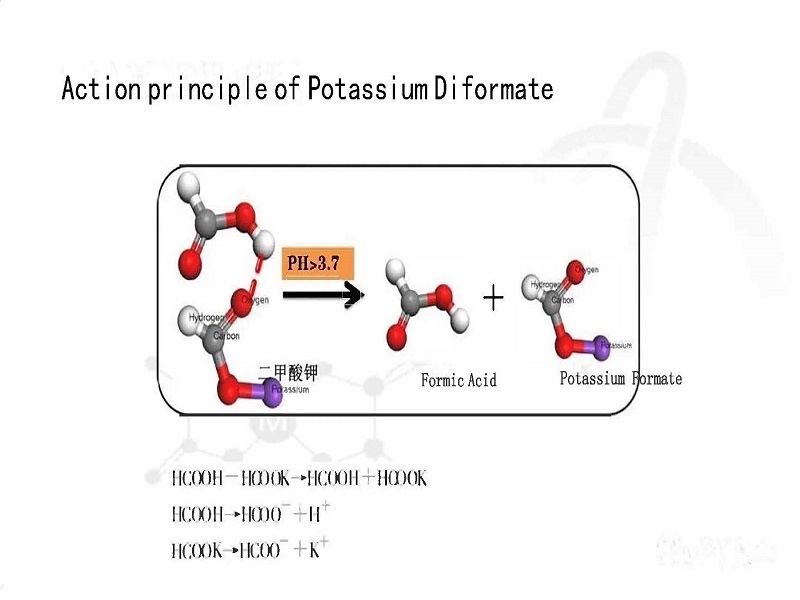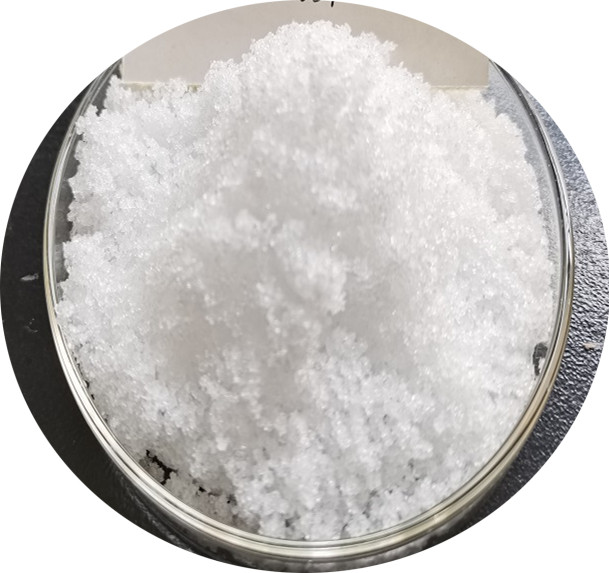The main role of Acidifier in feed is to reduce the pH value and acid binding capacity of feed. The addition of acidifier to the feed will reduce the acidity of the feed components, thus reducing the acid level in the stomach of animals and increasing the pepsin activity. At the same time, it will affect the acidity of the intestinal contents, and then affect the secretion and activity of amylase, lipase and trypsin, so as to improve the digestibility of the feed.
Adding acidifier to the diet of weaned piglets can reduce the acidity of feed, improve the acid effect and increase the utilization rate of feed in gastrointestinal tract. The research of Xing Qiyin and others showed that when the acid strength of the diet was low, the propagation of mold in the feed could be controlled, the feed mildew could be prevented, the feed freshness could be maintained, and the diarrhea incidence rate of piglets could be reduced.
The role of Acidifier in animals is shown in the following figure, mainly including the following aspects:
1) It can reduce the pH value in the stomach of animals and then activate some important digestive enzymes. The physical and chemical properties of organic acids will affect the effect of reducing the pH value of gastrointestinal contents. The pKa values of malic acid, citric acid and fumaric acid are between 3.0 and 3.5, belonging to medium strong acids, which can rapidly dissociate H + in the stomach, reduce the acid level in the stomach, promote the secretion of pepsin, improve the digestive function, and then achieve the acidification effect.
Acids with different degrees of dissociation have different effects. In practical application, acids with large degrees of dissociation can be selected to reduce the pH value of gastrointestinal tract, and acids with small degrees of dissociation can be selected for sterilization.
2) Acidifiers can regulate the microecological balance of animal intestinal tract, destroy the bacterial cell membrane, interfere with the synthesis of bacterial enzymes, achieve bacteriostatic or bactericidal effects, and thus prevent animal intestinal diseases caused by pathogenic microorganisms.
Common volatile organic acids and non-volatile organic acids have different bacteriostatic effects, different types and amounts of Acidifiers, and different inhibitory and killing effects on pathogenic bacteria in the gastrointestinal tract of animals.
The experimental results showed that the maximum amount of acidifier added in the feed is 10 ~ 30kg / T, and excessive use may lead to acidosis in animals. Cui Xipeng et al. Found that adding different proportions of potassium dicarboxylate to the feed has obvious bacteriostatic effect. Considering comprehensively, the recommended addition amount is 0.1%
3) Slow down the emptying speed of food in the stomach and promote the digestion of nutrients in the stomach and intestines. Manzanilla et al. Found that adding 0.5% formic acid to the diet of weaned piglets could reduce the emptying rate of gastric dry matter.
4) Improve palatability.
5) Anti stress, improve growth performance.
6) Improve the utilization of trace elements in the diet.
Post time: Aug-22-2022







